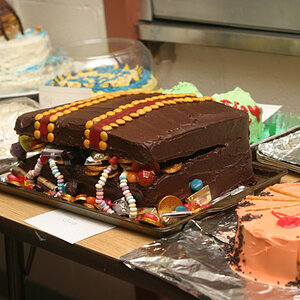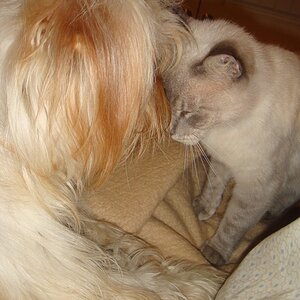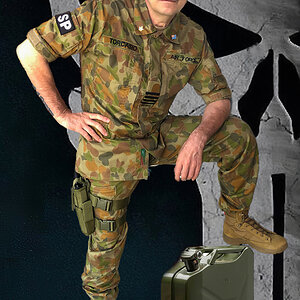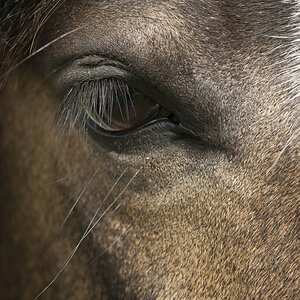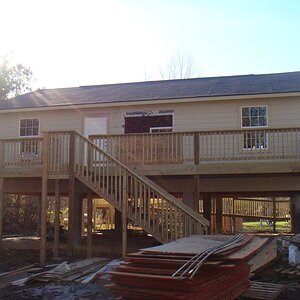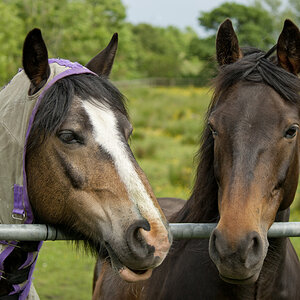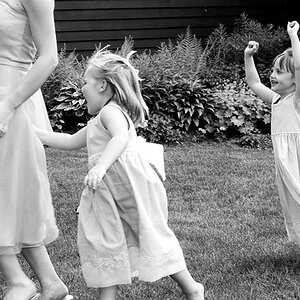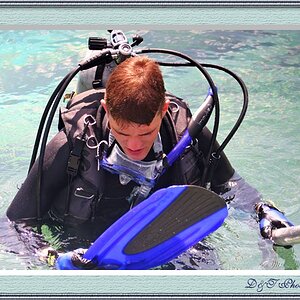dcclark
TPF Noob!
- Joined
- Feb 19, 2009
- Messages
- 480
- Reaction score
- 0
- Location
- Houghton, MI
- Website
- blog.dcclark.net
- Can others edit my Photos
- Photos OK to edit
Hello all -- here's my problem. It's related to taking time-lapse photos, but it's somewhat more involved than just "how do I do time-lapse?!"
Short summary (if you don't like to read a lot): I want to take an automated series of 2-5 minute exposures on my Nikon D40x, without shelling out a huge amount of money. Using a computer to control would be great, but no software I've found will let me take long enough exposures.
Background and details: I own a Nikon D40x. I am very interested in time-lapse photography, and I've done quite a bit of it in the past (for an example, see time lapse lift bridge. My setup is as follows:
- Camera in manual mode
- Laptop attached to the camera via USB
- Laptop running gphoto2 to control the camera, taking photos at pre-defined intervals.
This setup works very well -- gphoto2 can control the camera's settings, including aperture and shutter speed. For example, in the lift bridge time-lapse above, I was able to run a script which changed the shutter speed over time, to maintain a proper exposure as the sun set.
Now here's the problem: I'm now working on star trails. The problem is that the exposures required are much longer than my D40x can handle under computer control. I am looking to take exposures of around 2-5 minutes, which allow me to stay in the f/8 range and still be able to see stars, with a new moon. (I've done this test using 30 second exposures, stacked, but the sharpness isn't really adequate and the noise is a bit too much.)
The D40x shutter speeds max out at 30 seconds, and then goes to bulb mode. The problem is that gphoto2 can't control the camera in bulb mode, so I can't (for example) take a series of 5-minute long photos. The most I can do is stack a series of 30 second long exposures, at a very wide aperture, and high ISO (or else I can't get enough light in!).
Solutions I've already tried or can't use: There are a number of solutions I've found which aren't quite good enough. For example, Nikon's infrared remote works fine and lets me take exposures for as long as I want in bulb mode -- but that requires me manually timing, starting, and stopping the exposures. I want automatic, since these shots will last for hours.
Another option is to buy or make an intervalometer. Buying one (like PClix) is WAY more expensive than I am willing to pay, especially since it seems that a free solution is nearly available. I am not handy enough with electronics to build my own.
All other software that I've tried (gphoto2, Nikon Capture, Sofortbild) won't control the camera at all in bulb mode. However, gphoto2's most recent version does control some Canon cameras in bulb mode, but apparently not Nikons.
So, my questions are: Does anyone know of a software solution? Mac, Windows, or Linux will work. Alternately, does anyone know of any other kind of solution?
Thanks in advance!
Short summary (if you don't like to read a lot): I want to take an automated series of 2-5 minute exposures on my Nikon D40x, without shelling out a huge amount of money. Using a computer to control would be great, but no software I've found will let me take long enough exposures.
Background and details: I own a Nikon D40x. I am very interested in time-lapse photography, and I've done quite a bit of it in the past (for an example, see time lapse lift bridge. My setup is as follows:
- Camera in manual mode
- Laptop attached to the camera via USB
- Laptop running gphoto2 to control the camera, taking photos at pre-defined intervals.
This setup works very well -- gphoto2 can control the camera's settings, including aperture and shutter speed. For example, in the lift bridge time-lapse above, I was able to run a script which changed the shutter speed over time, to maintain a proper exposure as the sun set.
Now here's the problem: I'm now working on star trails. The problem is that the exposures required are much longer than my D40x can handle under computer control. I am looking to take exposures of around 2-5 minutes, which allow me to stay in the f/8 range and still be able to see stars, with a new moon. (I've done this test using 30 second exposures, stacked, but the sharpness isn't really adequate and the noise is a bit too much.)
The D40x shutter speeds max out at 30 seconds, and then goes to bulb mode. The problem is that gphoto2 can't control the camera in bulb mode, so I can't (for example) take a series of 5-minute long photos. The most I can do is stack a series of 30 second long exposures, at a very wide aperture, and high ISO (or else I can't get enough light in!).
Solutions I've already tried or can't use: There are a number of solutions I've found which aren't quite good enough. For example, Nikon's infrared remote works fine and lets me take exposures for as long as I want in bulb mode -- but that requires me manually timing, starting, and stopping the exposures. I want automatic, since these shots will last for hours.
Another option is to buy or make an intervalometer. Buying one (like PClix) is WAY more expensive than I am willing to pay, especially since it seems that a free solution is nearly available. I am not handy enough with electronics to build my own.
All other software that I've tried (gphoto2, Nikon Capture, Sofortbild) won't control the camera at all in bulb mode. However, gphoto2's most recent version does control some Canon cameras in bulb mode, but apparently not Nikons.
So, my questions are: Does anyone know of a software solution? Mac, Windows, or Linux will work. Alternately, does anyone know of any other kind of solution?
Thanks in advance!
Last edited:


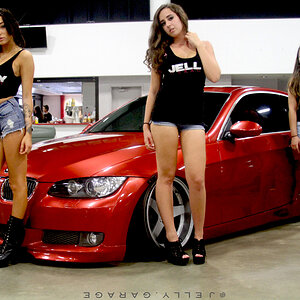
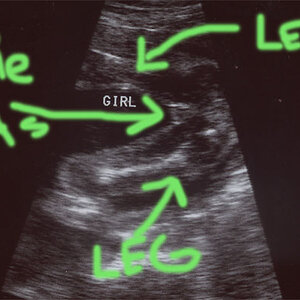
![[No title]](/data/xfmg/thumbnail/37/37603-739c5d9b541a083a12f2f30e45ca2b7b.jpg?1619738147)
